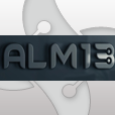Newbie Question
Hello All,
I stumbled across your board via Google.
I have a vendor package that supports MSI installation/deployment. I've inherited a transform file that was created for an older version from a client of mine. The client wants to upgrade the MST for the new release of the software package. The vendor has changed a few things in the MSI in the new version and I've migrated about 80% of the original MST which is mostly additional HKCU registry keys.
The part that has me stumped is when I install the application silently as the Administrator with the transform applied things work great. Now, what I'm having trouble figuring out is when another user logs in to the machine, and they click on the application icon the installer is invoked and it writes the required HKCU keys that creates a connection profile (keys are in the MST).
I've narrowed down which modifications in the original MST that invokes this behavior but, I'm trying to understand how this works? I need to map this same functionality to the new MST I'm developing for the new release.
I know this might be convoluted but I'm semi-new to MSI/MST development and the vendor does not provide much support when it comes to MSTs.
Any information is appreciated.
Thanks for your time.
-Matt-
I stumbled across your board via Google.
I have a vendor package that supports MSI installation/deployment. I've inherited a transform file that was created for an older version from a client of mine. The client wants to upgrade the MST for the new release of the software package. The vendor has changed a few things in the MSI in the new version and I've migrated about 80% of the original MST which is mostly additional HKCU registry keys.
The part that has me stumped is when I install the application silently as the Administrator with the transform applied things work great. Now, what I'm having trouble figuring out is when another user logs in to the machine, and they click on the application icon the installer is invoked and it writes the required HKCU keys that creates a connection profile (keys are in the MST).
I've narrowed down which modifications in the original MST that invokes this behavior but, I'm trying to understand how this works? I need to map this same functionality to the new MST I'm developing for the new release.
I know this might be convoluted but I'm semi-new to MSI/MST development and the vendor does not provide much support when it comes to MSTs.
Any information is appreciated.
Thanks for your time.
-Matt-
0 Comments
[ + ] Show comments
Answers (2)
Please log in to answer
Posted by:
jmcfadyen
15 years ago
in your case you need to find the component that contains the HKCU registry.
find one of the items in the component that is HKCU and mark it as the keypath.
depends on the tool you are using as to how this is done.
1) to find the component lookup the registry table find you HKCU entries. (they are denoted by a 1 in the ROOT column of the registry table. ) remember one of the Registry keys first columns.
2) lookup the Component column of that registry table. then goto the Component table (remember the Component name from Component column)
3) in the component table find that component. In the last row which is the keypath set the Registry item you want as the keypath from the first step.
in Wise this is pretty easy. find the component expand contents. Find HKCU item right click mark as keypath.
for more detail read this
http://johnmcfadyen.spaces.live.com/blog/cns!9DD01136FC094724!123.entry
find one of the items in the component that is HKCU and mark it as the keypath.
depends on the tool you are using as to how this is done.
1) to find the component lookup the registry table find you HKCU entries. (they are denoted by a 1 in the ROOT column of the registry table. ) remember one of the Registry keys first columns.
2) lookup the Component column of that registry table. then goto the Component table (remember the Component name from Component column)
3) in the component table find that component. In the last row which is the keypath set the Registry item you want as the keypath from the first step.
in Wise this is pretty easy. find the component expand contents. Find HKCU item right click mark as keypath.
for more detail read this
http://johnmcfadyen.spaces.live.com/blog/cns!9DD01136FC094724!123.entry
Posted by:
anonymous_9363
15 years ago
ORIGINAL: webjesterMatt, welcome to the dark and mysterious world of packaging and to AppDeploy.
The part that has me stumped is when I install the application silently as the Administrator with the transform applied things work great. Now, what I'm having trouble figuring out is when another user logs in to the machine, and they click on the application icon the installer is invoked and it writes the required HKCU keys that creates a connection profile
What you describe is EXACTLY what Windows Installer is designed to do: it's "repairing" the installation because the current user part of the application is missing. The same behaviour will be apparent if you were to log in with yet another, different user account.
 Rating comments in this legacy AppDeploy message board thread won't reorder them,
Rating comments in this legacy AppDeploy message board thread won't reorder them,so that the conversation will remain readable.



